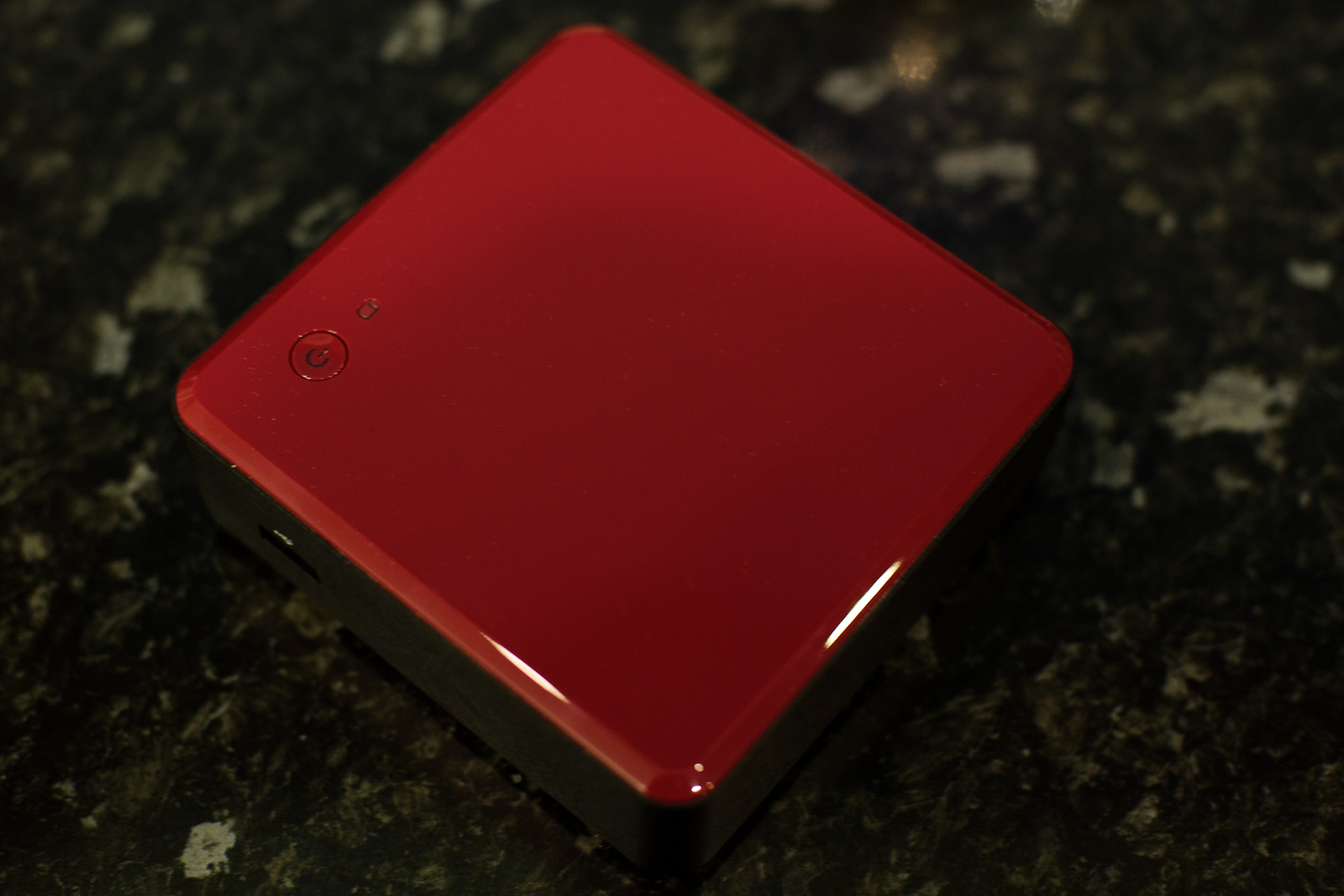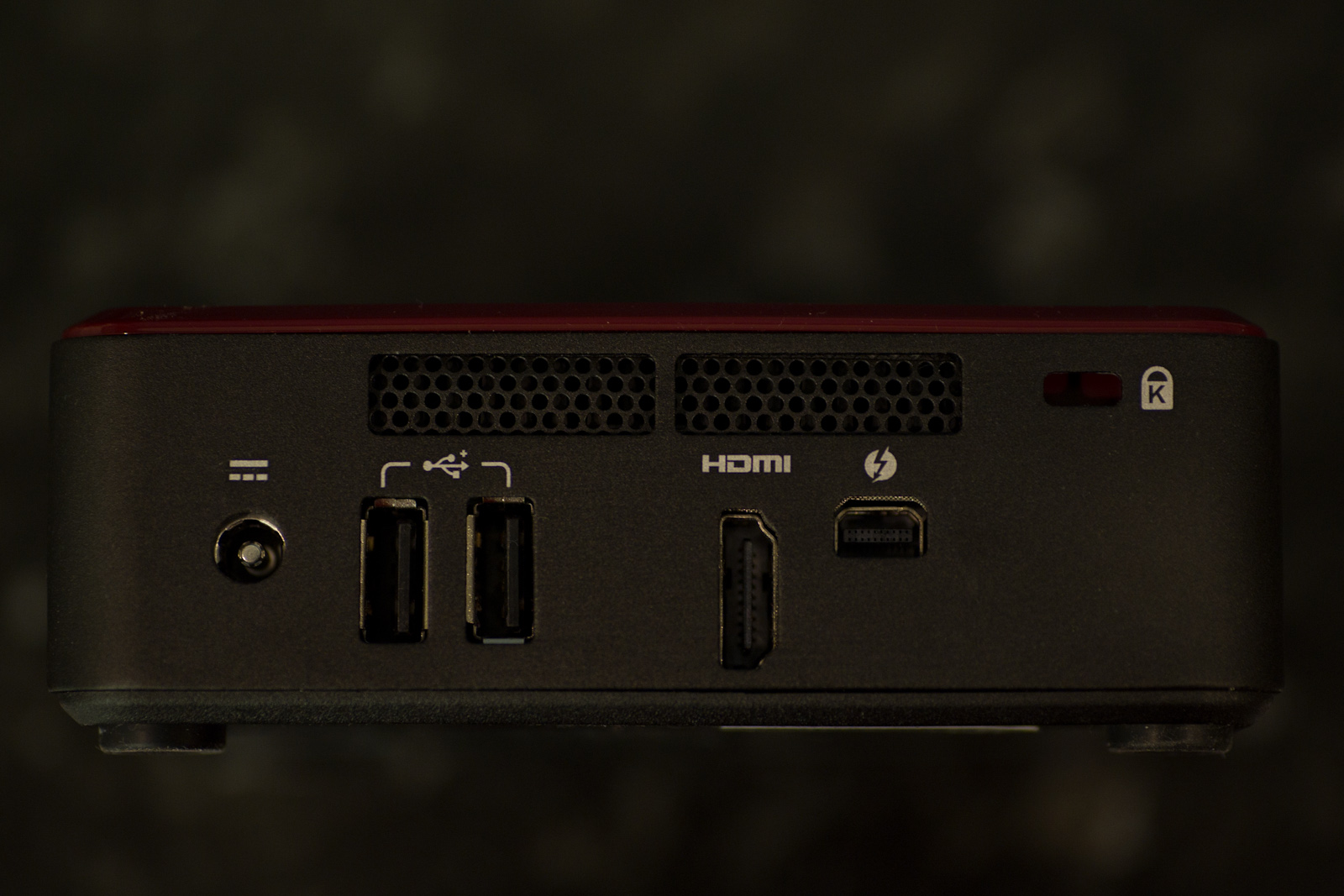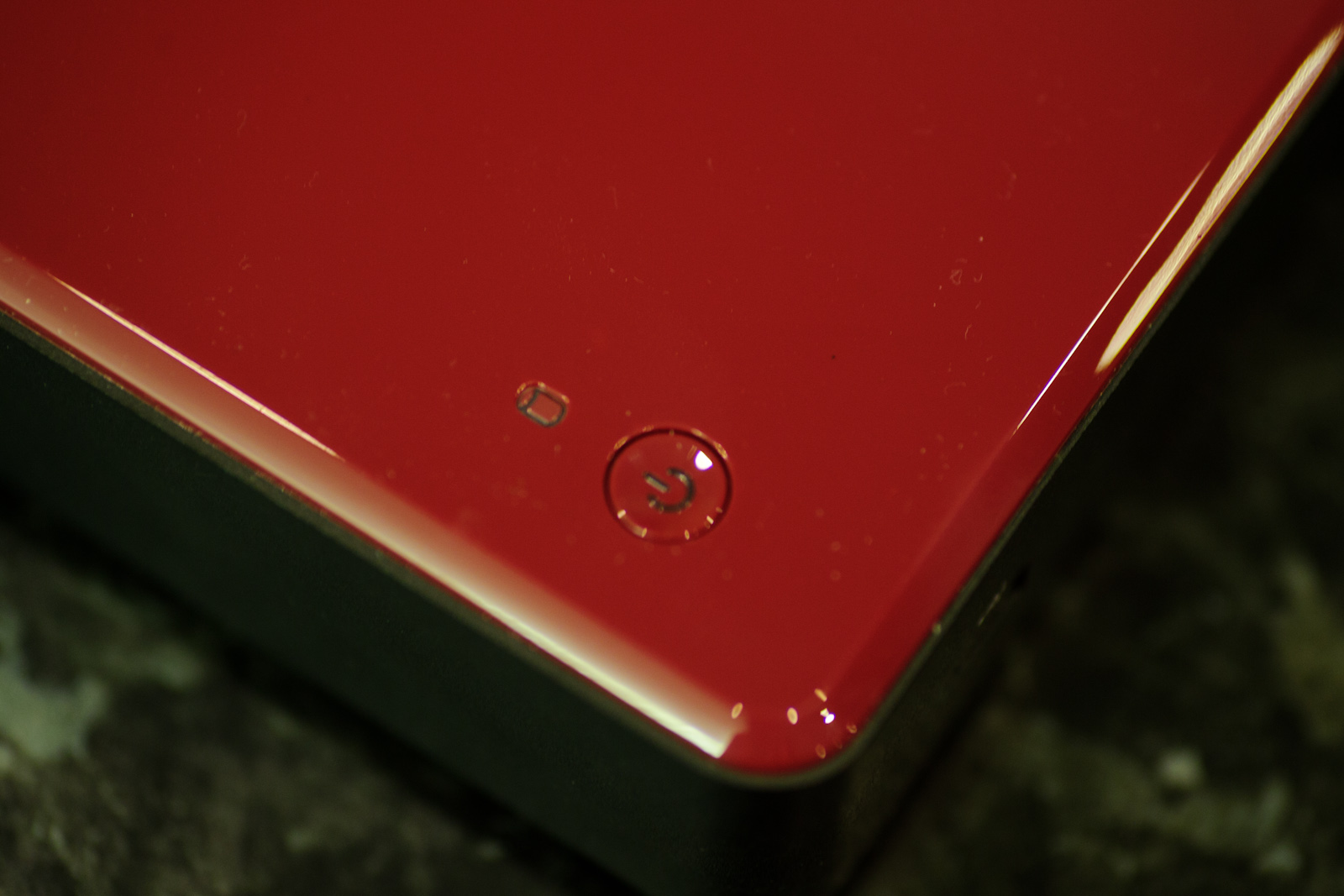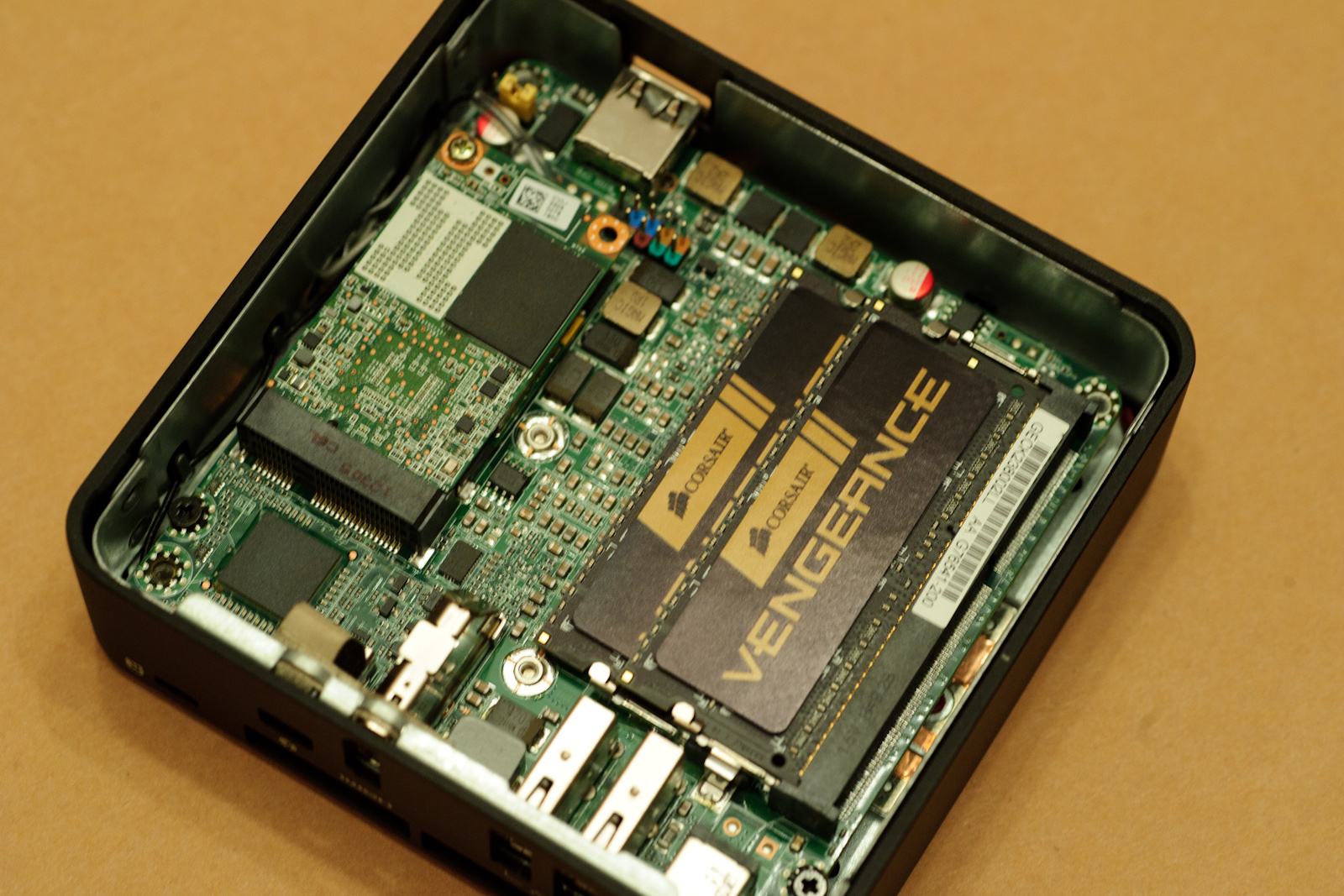Intel Next Unit of Computing (NUC) review
Intel produces a Core i3-based computer you can hold in the palm of your hand. But the pint-sized wonder needs to be self-assembled and is going to cost you...
Intel's NUC is a great showcase of just how much compute power the firm can now pack in a device that is smaller than a lunch box, however until it slashes the price by 25 per cent or some of its motherboard partners come out with cheaper devices then it most businesses will have to stick with microATX machines if they want small, affordable computers.

Intel NUC - Top

Intel NUC - Ports

Intel NUC - Power

Intel NUC - Internal
Intel's Next Unit of Computing (NUC) is the latest motherboard which shows just how much computing power can be packed into a device that is barely larger than the palm of your hand.
Last year Intel launched motherboards based on its Thin-ITX form factor, a tweak on the long-standing Mini-ITX standard. Now the firm has gone a step further with its NUC design, shrinking the motherboard down to 4x4ins and despite its diminutive characteristics, the NUC punches well above its weight.
Component squeeze
Intel's NUC is available in two models - the DC3217BY and DC3217IYE with the former featuring Thunderbolt and HDMI connectivity whilst the latter sports an Ethernet port and dual HDMI outputs. Both of Intel's NUC boards pack the same Core i3 3217U processor attached to the firm's QS77 chipset with DDR3 1,600MHz support and has no problems running Microsoft's Windows 7 or Windows 8 operating systems.
Intel offers both motherboards as standalone units for purchase or as barebones machines that feature a lunch box style case. Believe us when we say they really are barebones - aside from the case and the motherboard which has the Core i3 processor soldered, the user has to supply the RAM, SSD and a Wi-Fi adaptor.

You need to add components such as RAM to the NUC before it is ready to use
We tested Intel's NUC based on the DC3217BY motherboard and slotting in the two SO-DIMM RAM modules wasn't tricky. Intel requires users to screw down the two mini-PCI Express cards, which isn't difficult but it means getting the NUC up and running is not a tool-less affair.
Intel's motherboard design team has done a top job in packing so much silicon in a 4x4in motherboard, but the case design isn't quite as good. The firm's decision of use shiny plastic is a surprising choice given the device is marketed for use in commercial environments. Although the aluminium scaffolding beneath the plastic means the device feels sturdy, for something that costs in excess of 250 just for a motherboard, CPU and case combination the materials should have been better.

The casing doesn't quite exude the premium quality we expected
Intel's choice of case materials aside, cooling the Core i3 3127U and QS77 chipset is surprising quiet given its size. A grill above the connectivity ports expelling hot air, though the case gets warm to the touch, at no point did we experience overheating or the fan noise becoming noticeable.
Although Intel's specification tweaks between the two NUC boards are relatively minor, the firm aims the DC3217IYE at the digital signage market by virtue of the two HDMI ports, each of which support 1080p resolutions.
The firm's DC3217BY motherboard instead opts for a 10Gbps Thunderbolt connection, which supports display output and daisy chaining of devices. But given the high cost and lack of choices available, the option seems more like a way of promoting Intel's own Thunderbolt standard rather than a viable economic option for many users at this time.
Get the ITPro daily newsletter
Sign up today and you will receive a free copy of our Future Focus 2025 report - the leading guidance on AI, cybersecurity and other IT challenges as per 700+ senior executives
-
 Westcon-Comstor and Vectra AI launch brace of new channel initiatives
Westcon-Comstor and Vectra AI launch brace of new channel initiativesNews Westcon-Comstor and Vectra AI have announced the launch of two new channel growth initiatives focused on the managed security service provider (MSSP) space and AWS Marketplace.
By Daniel Todd Published
-
 Third time lucky? Microsoft finally begins roll-out of controversial Recall feature
Third time lucky? Microsoft finally begins roll-out of controversial Recall featureNews The Windows Recall feature has been plagued by setbacks and backlash from security professionals
By Emma Woollacott Published
-
 The UK government wants quantum technology out of the lab and in the hands of enterprises
The UK government wants quantum technology out of the lab and in the hands of enterprisesNews The UK government has unveiled plans to invest £121 million in quantum computing projects in an effort to drive real-world applications and adoption rates.
By Emma Woollacott Published